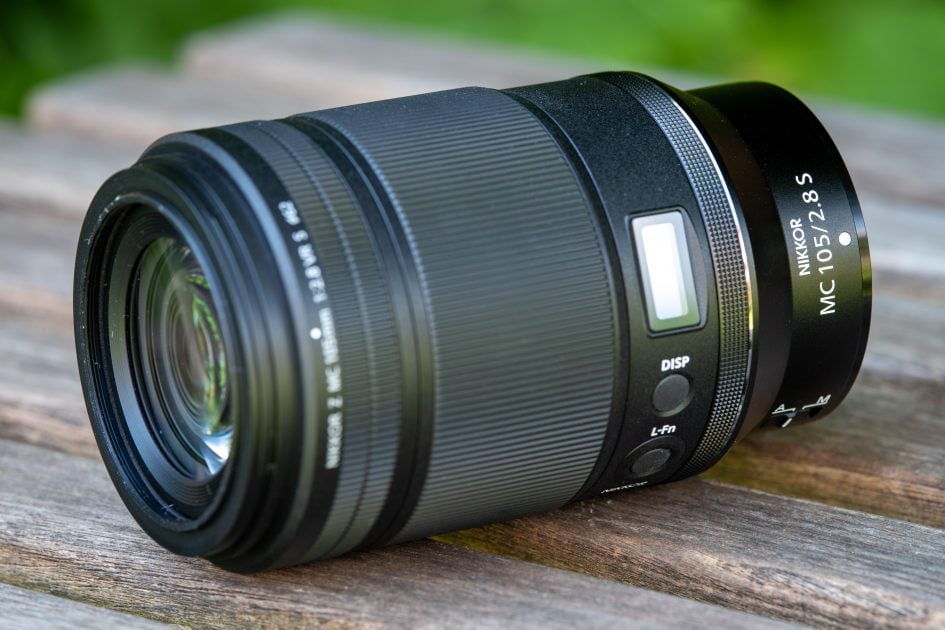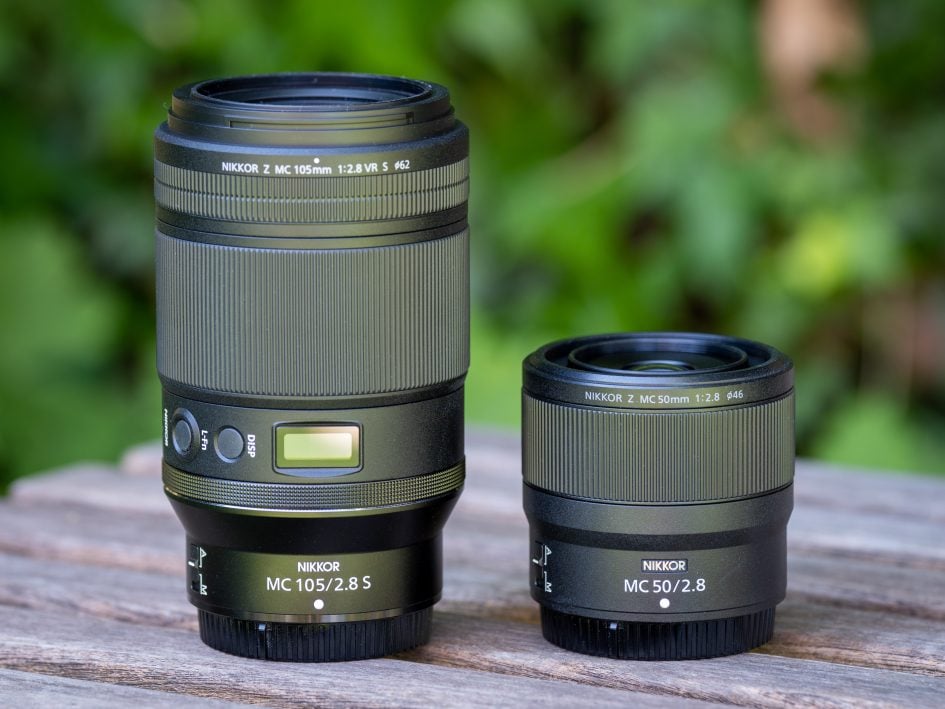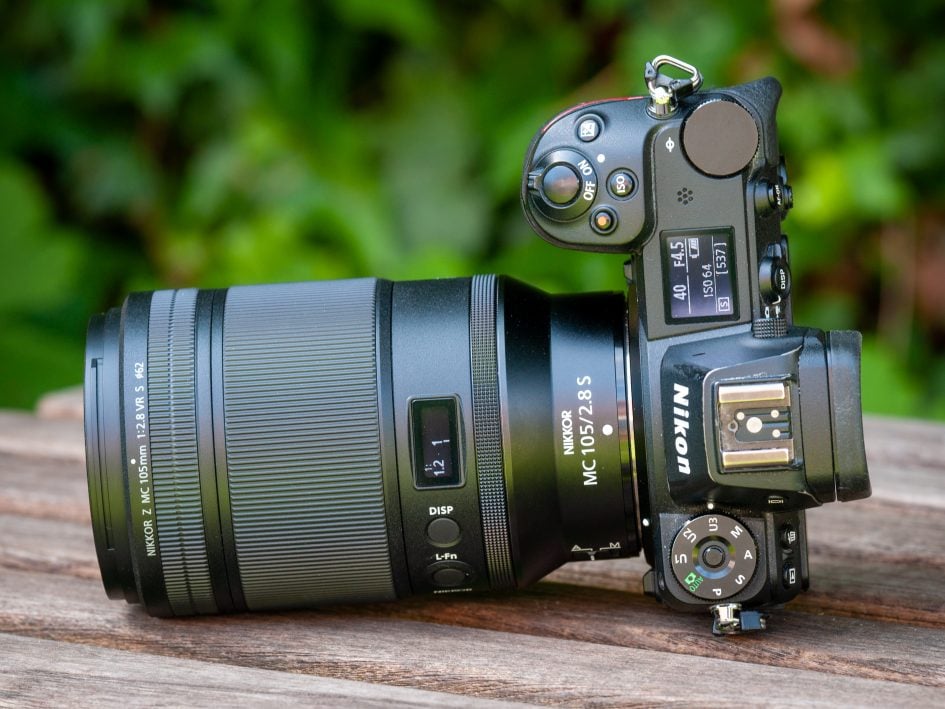Nikon Z MC 105mm f2.8 VR S review
-
-
Written by Thomas
Intro
The Nikon Z MC 105mm f2.8 VR S is one of two macro lenses for Nikon’s Z-mount mirrorless cameras – the other being the Z MC 50mm f2.8. It achieves 1:1 (1x) magnification without the use of bellows or extension tubes and is corrected for full-frame cameras. It can fill the frame with a subject of 24 x 36mm (0.94 x 1.42in.) at 1x magnification. The new lens is the successor to the AF-S VR Micro-Nikkor 105mm f2.8 G IF-ED which was introduced in 2006. It offers optical image stabilization, autofocus, an additional function button which can be assigned different functions, plus an OLED display to indicate aperture or focusing distance and depth-of-field, or magnification.
The Nikon Z MC 105mm f2.8 VR S costs 1099 EUR / 1000 USD / 999 GBP.
Facts and features
Let’s compare the Nikon Z MC 105mm f2.8 VR S (“Z-Nikkor” for short) to the AF-S VR Micro-Nikkor 105mm f2.8 G IF-ED (“F-Nikkor”) and Laowa 100mm f2.8 2x Macro APO (“Laowa”). As usual I’ve rated the features with a [+] (or [++]), when it’s better than average or even state of the art, a [0] if it’s standard or just average, and [-] if there’s a disadvantage.
Size (diameter x length): 85 x 140mm (3.3 x 5.5in.) plus 63mm for the lens hood (101mm diameter). The F-Nikkor is 83 x 116mm + 70mm lens hood (add 30mm for the FTZ adapter to use it on a Nikon Z camera), the Laowa is 72 x 159mm + 51mm lens hood. These are all pretty long lenses. [0]
Weight: 622g (22 oz.) plus 67g for the plastic lens hood. The F-Nikkor is 750g + 60g lens hood (add another 133g for the FTZ adapter to use it on a Nikon Z camera), the Laowa weighs 700g (25 oz.) + 38g lens hood. [0]
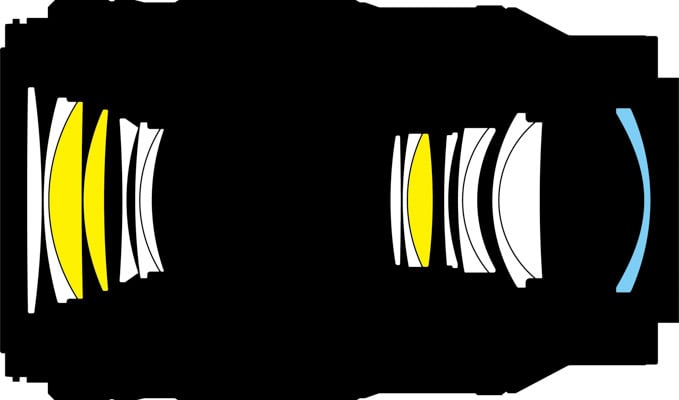
Optics: 16 elements in 11 groups including three special dispersion elements and one aspherical element. The lens has “ARNEO” anti-reflective coating in addition to Nikon’s Nano-coating to reduce flare, glare and ghosting plus fluorine-coating on the front element to repel water, dust, and dirt and make cleaning easier. The F-Nikkor has 14 elements in 12 groups with one special dispersion element, the Laowa has 12 elements in 10 groups including two special dispersion elements. [+]
Closest focus distance is 0.29m (0.95ft.) where the Z-Nikkor reaches a magnification of 1:1 with a working distance of 0.13m (5.1in.). The F-Nikkor goes to 0.31m/1:1 magnification with a working distance of 0.15m. The Laowa goes down to 0.25m where it reaches a unique magnification of 2:1 (2x) at a working distance of 0.08m (3.1in.). At 1x magnification working distance of the Laowa is 0.10m. The Z-Nikkor reaches a magnification of 1:10 at a distance of 1.2m. [+]
Image stabilization: The Z-Nikkor offers optical stabilization (VR) which works in conjunction with the body-based stabilization on Nikon’s full-frame Z cameras to achieve a claimed 4.5 stops of stabilization over 5 axes. The F-Nikkor also has optical image stabilization built in (pitch and yaw) which can be used together with the body-based image stabilization of a Nikon Z body. But in this case the body provides only roll correction, not the full 5 axis. The Laowa has no optical stabilization. You only get the built-in sensor-shift stabilization of the camera. [+]
Filter-thread: 62mm, same as the F-Nikkor. The Laowa uses 67mm filters. [+]
Autofocus: Yes, just like the F-Nikkor. So focus bracketing can be done with the built-in camera function. Manual-focus override is by simply turning the dedicated focus ring. The focus ring of the Z-Nikkor has the usual variable gearing to assist in precise focusing which is very important especially in macro photography. On Nikon Z cameras introduced October 2020 or later you can even reverse focus direction. The Z-Nikkor also sports a focus-limiter which can prevent the lens to search focus farther away than 0.5m (1.6ft.) plus a function button which can be assigned e. g. AF-lock or AF-on. The Laowa is manual focus only. All three lenses do not change their length with focusing. [+]
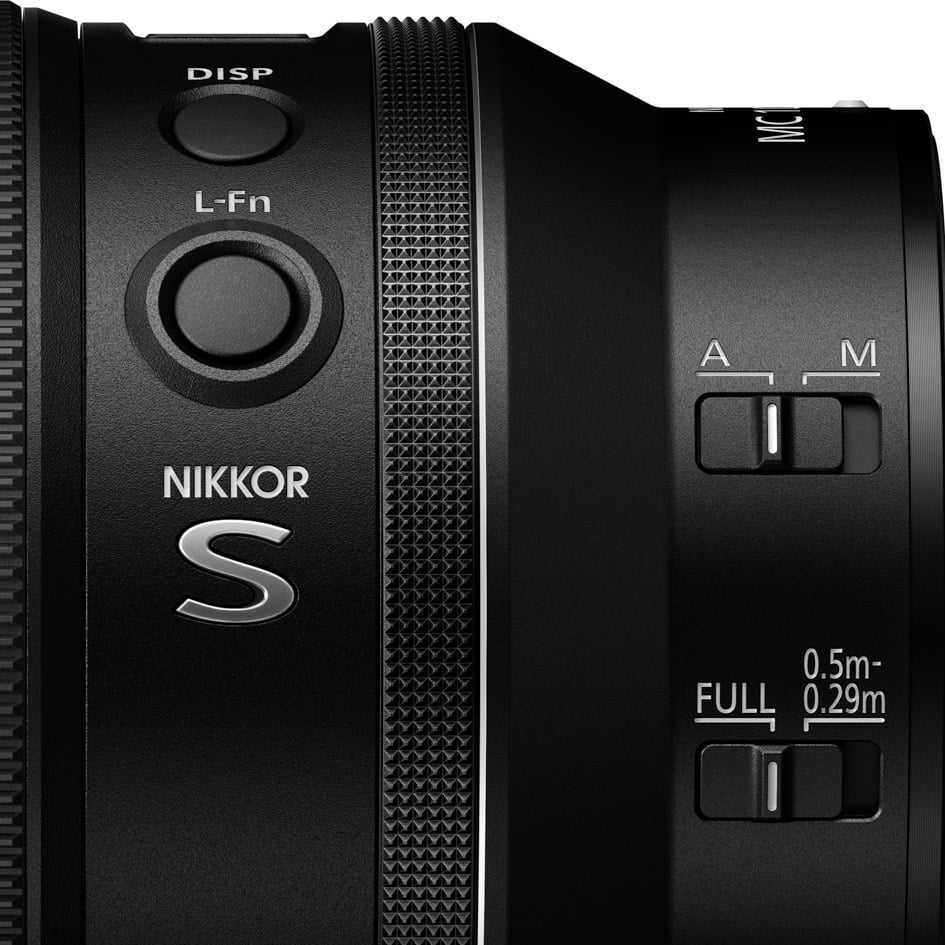
Display: The Nikon Z MC 105mm f2.8 VR S features the same OLED display as other professional Z-Nikkors indicating (effective) aperture or focusing distance (in m or ft.) and depth-of-field, or magnification. This display is hard to read under sunny conditions in its default setting but it can be made as bright as the top display on the Z7. You can switch through the different display types using the DISP-button. The F-Nikkor or Laowa have no such display but sport the usual distance and dof indicators on the focus ring. [+]
Aperture: The lens has a slim multi-function control ring at the back of the lens in addition to the dedicated focus ring. The control ring can be assigned to operate the aperture (which is the default), exposure compensation, or ISO sensitivity – or simply switched off. Position and texture of the ring has changed over previous models: It moved a bit forward from the narrow throat of the lens mount to the wider part of the barrel which is not really an improvement in my opinion. The F-Nikkor has no dedicated aperture ring. Aperture on the Laowa is operated manually via an aperture ring with 1 stop clicks. Effective focal ratio on the Z-Nikkor loses 1.3 stops (to f4.5) at 1:1 magnification. [+]
Lens profile: The Z-Nikkor comes with a lens profile which can be controlled from the camera. Vignette control offers the usual options of High, Normal, Low and Off. Diffraction compensation and Auto distortion control can be activated or deactivated. The F-Nikkor has a lens profile in Adobe’s RAW converter but with the Laowa you have to rely on manual corrections. [+]
Covers full frame/FX or smaller. Same with the F-Nikkor and Laowa. [+]
Price: 1099 EUR (incl. 19% VAT) / 1000 USD / 999 GBP. The F-Nikkor is 800 EUR / 900 USD / 760 GBP, the Laowa costs 500 EUR / 450 USD / 470 GBP. [0]
Use with teleconverter: Nikon’s Z teleconverters cannot be used with any of the lenses in this comparison. [0]
The lens comes with the usual flimsy pouch with no strings to pull it close. The lens hood is included and locks in place to avoid accidentally falling off plus it is reversible for transport. The F-Nikkor comes with a soft pouch and reversible lens hood, the Laowa only with a reversible lens hood. [0]
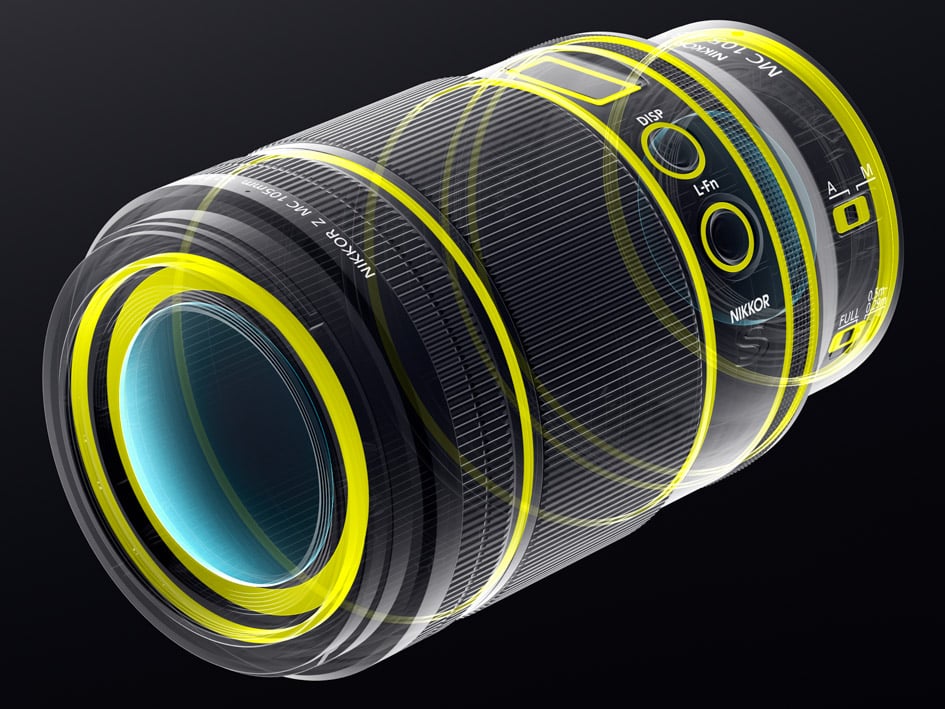
Sealing: yes, a rubber grommet at the lens-mount plus further special weather-sealing throughout the construction. The F-Nikkor has a rubber grommet at the lens mount, the Laowa has not even that. [+]
At a score of 0[-]/5[0]/11[+] the Nikon Z MC 105mm f2.8 VR S offers a lot of useful features including optical image stabilization, full weather sealing and fluorine-coating, ARNEO plus Nano anti-reflex coating, the nifty OLED display and the multi function ring. With autofocus it can use the focus bracketing feature of Nikon Z bodies and take a great deal of hassle out of focus stacking. My biggest (and so far only) disappointment with the lens is that it does not reach beyond 1:1 magnification – not even allowing the use of teleconverters.
Above: Nikon Z MC 105mm f2.8 VR S (left), Nikon Z MC 50mm f2.8 (right)
Alternatives
If you’re looking for macro lenses offering a magnification of at least 1:1 (1x) and focal lengths around 100mm there are a lot of alternatives. Most of them are older DSLR designs which can (still) be used via the FTZ adapter on a Nikon Z camera:
- The Samyang 100mm f2.8 ED UMC Macro is a DSLR design from 2015 and available in Nikon F mount but not (yet) for Nikon Z mount. It goes down to 1x magnification and costs about 430 EUR / 500 USD / 390 GBP. It has no optical image stabilization, is manual focus only, has a manually operated aperture and does not transfer EXIF data to the camera.
- Laowa has the 100mm f2.8 2x Macro APO which is a DSLR design from 2019. It is available for Nikon F & Z mounts and costs about 500 EUR / 450 USD / 470 GBP. It offers the unique capability to go down to 2:1 (2x) magnification but like the Samyang it has no image stabilization, no autofocus, a manually operated aperture and does not transfer EXIF data to the camera.
- Nikon’s AF-S VR Micro-Nikkor 105mm f2.8 G IF-ED is a DSLR design from 2006 going down to 1:1 magnification and offering autofocus and optical image stabilization. It costs 800 EUR / 900 USD / 760 GBP.
If you want autofocus and a native mirrorless mount the number of alternatives slims down considerably:
- Nikon has the Z MC 50mm f2.8 which costs 729 EUR / 649 USD / 649 GBP. The lens has a maximum magnification of 1:1 but with its shorter focal length working distances are only half of what the Z MC 105mm f2.8 VR S offers. It also lacks the optical image stabilization but relies solely on the IBIS built into the camera.
- Sigma has the 105mm f2.8 DG DN Macro Art, an original mirrorless design from 2020 which can reach down to 1:1 (1x) magnification. At 749 EUR / 799 USD / 699 GBP it is currently only available in Sony E-mount and Leica L-mount but Sigma is certainly working hard to get their lenses adapted to Z mount. The lens has no optical image stabilization but offers a de-clickable aperture ring and an AF-lock button plus it can use Sigma’s L-mount teleconverters to reach magnifications of up to 2x.
Focus
Focus accuracy and repeatability is critical to consistently produce sharp shots. Repeatability (the accuracy of focus on the same subject after repeated focus-acquisition) of the Nikon Z MC 105mm f2.8 VR S is good (measured 97.9% in Reikan FoCal) with no outliers over a series of 40 shots. Results are a little more variable when the lens focuses from infinity than from a closer distance and I detected some hunting when the lens was far out of focus. The lens focuses in around 0.5 sec from infinity to 1.2m (1:10 magnification), which is pretty fast.
The focus ring is 30mm wide. Its rubber surface is structured for better grip and can be operated with one finger. AF-operation of the lens in photo-mode can be heard as a low buzz from the outside but if you record video with the built-in microphone AF is almost silent – as is VR operation.
As you pull focus, you’ll notice focus breathing: the image became 8% more magnified when I adjusted focus from infinity to 1.2m. This is visible and could be distracting when shooting videos.
Image stabilization
To test the effectiveness of the image stabilization with the Nikon Z MC 105mm f2.8 VR S on a Nikon Z7 camera body, I did a series of 140 test-shots hand-held with shutter speeds from 1/100 of a second down to 1/3 sec at 5m distance. I used the shots at 1/100 sec with VR=off as reference of how good my hand-holding was at the time of the test and Reikan FoCal did the chore of evaluating the sharpness of all shots.
Here’s the results: With VR switched on the combo produced results down to 1/25 sec (2 stops) with consistently 100% sharp shots. Even at 1/12 sec (3 stops) average quality was better than at 1/100 sec with VR=off. At 1/6 sec (4 stops) 65% of the shots were still sharp with another 15% very usable. At 1/3 sec (5 stops) only 25% of the shots were sharp with another 20% still usable. This is an advantage from the VR image stabilization of around 4 stops.
I cannot judge how effective Nikon’s VR is at closer distances but it might be better than image stabilization based purely on sensor shift. As you get closer to your subject the effect of shake is multiplied by the magnification and you should adapt shutter speed accordingly even with VR – or use a tripod.
Next check out my quality results!
Check prices on the Nikon Z MC 105mm f2.8 VR S at B&H, Adorama, WEX UK or Calumet.de. Alternatively get yourself a copy of my In Camera book or treat me to a coffee! Thanks!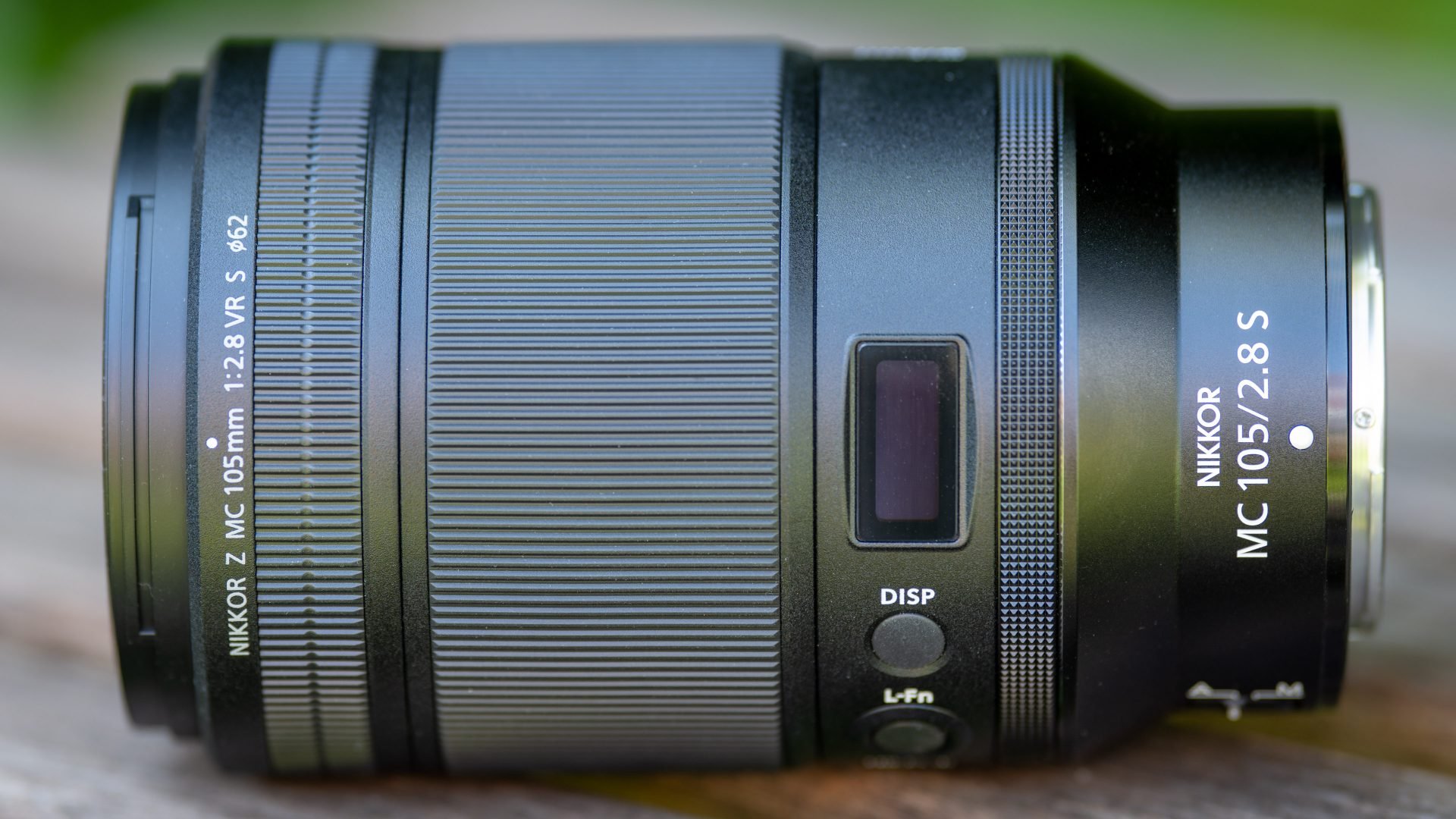
 Nikon's Z MC 105mm f2.8 VR S is a very good macro lens which also doubles up as a light telephoto. It produces very sharp images with almost no field-curvature or colour aberrations and can confidently be used wide open and in challenging contra-light situations. Its Bokeh is nice and the optical image stabilization should prove helpful with the extra challenges of close-up shooting. So the Z MC 105mm f2.8 VR S certainly earns a Highly Recommended. I only regret that Nikon missed the opportunity to go beyond 1x magnification.
Nikon's Z MC 105mm f2.8 VR S is a very good macro lens which also doubles up as a light telephoto. It produces very sharp images with almost no field-curvature or colour aberrations and can confidently be used wide open and in challenging contra-light situations. Its Bokeh is nice and the optical image stabilization should prove helpful with the extra challenges of close-up shooting. So the Z MC 105mm f2.8 VR S certainly earns a Highly Recommended. I only regret that Nikon missed the opportunity to go beyond 1x magnification.